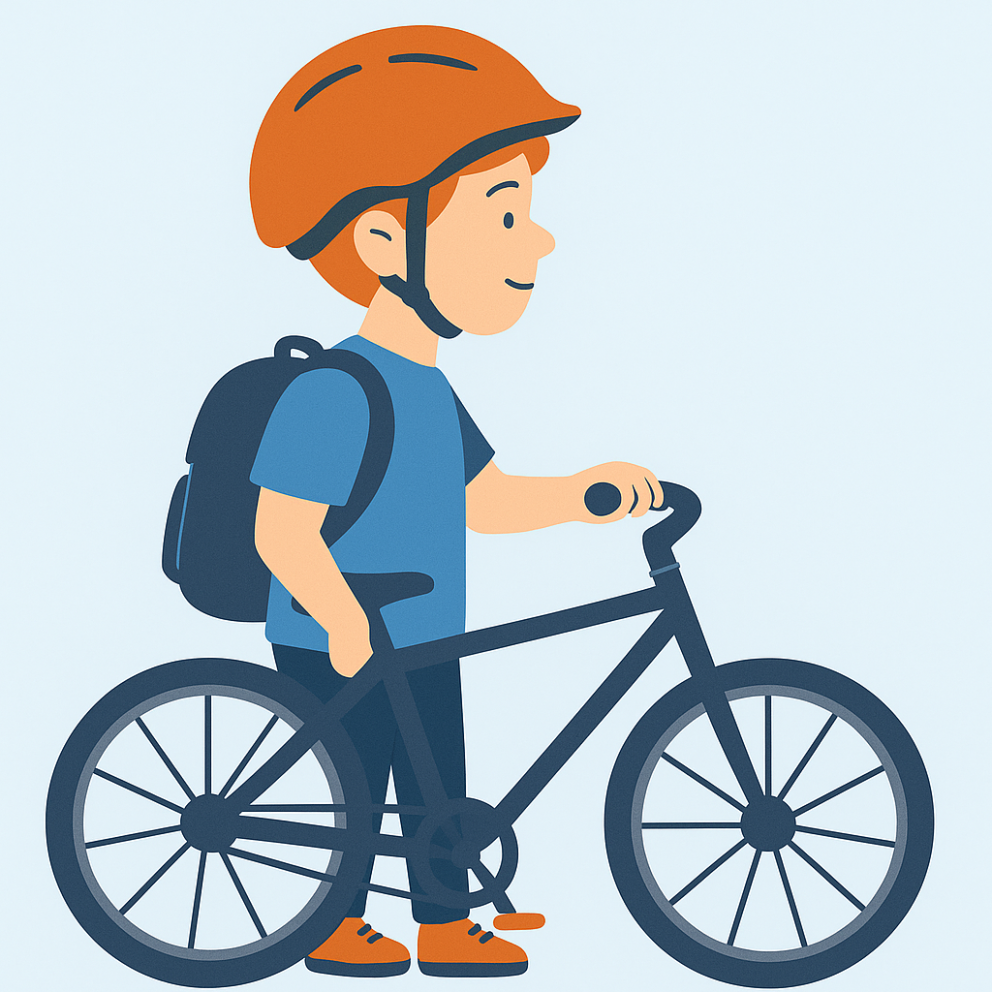Back to school - kids in traffic
In the coming days, schools across the country will reopen, and thousands of children will be heading out into traffic every day – walking, cycling, or riding in their parents’ cars.
The first weeks of the school year are a sensitive time on the roads, as children adjust to new routines and many take their first steps as independent road users. It is therefore the responsibility of all of us – parents, drivers, and society as a whole – to ensure their safety.
We have compiled a few key points about children’s traffic awareness at different ages, to help guide parents and drivers on what to watch out for, and how to meet children at their level so they can learn to navigate their surroundings and the traffic environment safely.
Preschool children (ages 2–5)
Children at this age perceive their surroundings in simple terms and lack the maturity to judge the speed or distance of vehicles. They may react suddenly and run into the street without warning. Their small size also makes them difficult for drivers to see.
It is crucial for parents to always hold their children’s hands and teach them the basics, such as:
-
“Stop – look – listen.”
-
Always cross at designated crosswalks and obey traffic signals.
Younger primary school children (ages 6–9)
At this age, children begin learning traffic rules and can follow instructions, but still struggle to judge the speed of cars and the dangers they pose. They can also become distracted, chatting with friends or rushing excitedly to their destination.
Parents should regularly review the rules, practice the school route with their child, and explain why safety rules matter. Playgrounds around schools often bring lots of activity and noise, especially when snow piles up in winter – children rarely recognize the risks that can arise in such situations.
Middle school children (ages 10–12)
Many children at this stage start traveling more independently. They have a better understanding of traffic but may be careless, for example when riding bicycles or e-scooters. They need clear reminders about:
-
Always wearing a helmet.
-
Using reflectors.
-
Following traffic rules, such as stopping before crossing and waiting for the green light.
Teenagers (ages 13–15)
Teenagers generally understand traffic well but may be distracted by phones or headphones, reducing their awareness. They should be reminded to:
-
Stay alert and attentive in traffic.
-
Remember their role as role models for younger children.
-
Keep in mind that safety is more important than speed or constant phone use.
Tips for parents
-
Practice the school route regularly with your children and point out danger spots in your neighborhood.
-
Teach them the simple key words: “Stop – look – listen.”
-
Ensure they use reflectors whether walking or cycling, and always wear a helmet when cycling or on scooters.
-
Talk openly about how traffic can be dangerous and why rules matter.
Reminders for drivers
-
Slow down in residential areas, near schools, and playgrounds.
-
Always assume children may act unpredictably – running into the street, turning suddenly, or falling off a bike.
-
Stop for pedestrians at crosswalks.
-
Avoid phone use and other distractions, especially near schools and playgrounds.
-
Be patient – lives are at stake.
As schools across the country reopen, it is essential that we all show caution, responsibility, and care in traffic. Our children deserve to get to and from school safely – and it is our collective responsibility to make sure they do.
